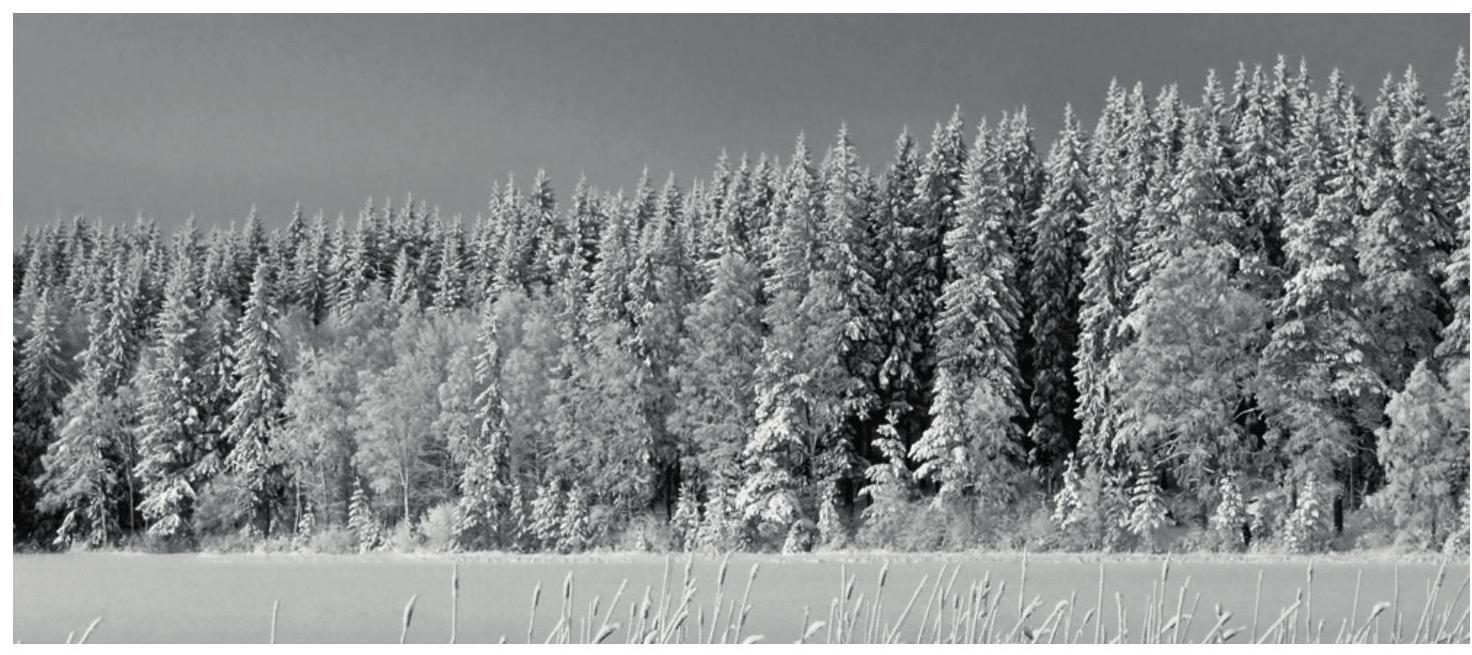Boreal forests stretch across Canada, Russia and Scandinavia. This northern ecosystem accounts for 29% of the world's forest areas. The long, cold winters favour tall evergreen trees with either needles or scale-like leaves. These trees are wind-pollinated and their seeds are not enclosed in a fruit. The photograph shows a typical boreal forest in winter. 
Identify the dominant plant phylum in the boreal forest.
Coniferophyta/conifer/coniferous/gymnosperms/pinophyta
In some areas there are gaps in the boreal forest where trees fail to grow and peat tends to accumulate. Suggest reasons for this.
a. waterlogged soil/poor drainage OR acidic soil OR anaerobic conditions/soil
b. organic matter is not «fully» decomposed «leading to peat formation» OR decomposers/saprotrophs less active/fewer in cold «temperatures»
An increase in global temperatures poses a critical threat to boreal forests. Explain the consequences of climate change to this northern ecosystem.
a. higher temperatures so more transpiration/droughts/dehydration/water shortage
g. faster decomposition/nutrient cycling «so conditions in the ecosystem change»
The boreal forests are situated close to the north pole and even in summer the intensity of sunlight is lower than at the equator. Sketch a graph showing the effect of light on the rate of photosynthesis, labelling the axes.
- -axis labelled as light intensity/amount of light
AND
-axis labelled as rate of photosynthesis/rate of oxygen release/rate of carbon dioxide uptake;1 mark - Curve starting at/slightly to the right of the -axis origin, rising rapidly and then more slowly, plateauing but never dropping;
1 mark

